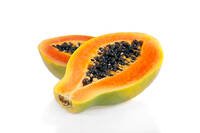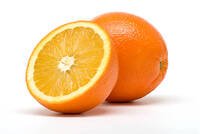
Your Face is Pale, your Head is dizzy, and You Feel Breathless When Walking? Don’t be Panic! Possible Symptoms of Iron Deficiency Anemia
According to statistics from the World Health Organization (WHO), nearly a quarter of the world’s population suffers from anemia, among which iron deficiency anemia (Iron deficiency anemia) is the most common in women and children.
Most people’s impression of anemia is that they are pale, have trouble breathing, are easily out of breath, and even feel dizzy when they stand up after squatting. However, what is the difference between iron deficiency anemia and other types of anemia? How to improve? Let’s understand from the causes and symptoms!
Iron deficiency anemia causes
We can easily associate from the meaning of the word that the lack of iron in the blood is the cause of iron deficiency anemia. Since iron is an important component of hemoglobin, iron deficiency will cause defects in heme synthesis, resulting in a decrease in heme concentration (hemoglobin is less than 13g/dL in men and less than 12g/dL in women). When oxygen cannot be transported to the organs throughout the body, it will Symptoms of anemia appear.
Insufficient sources of iron
Insufficient iron intake can be said to be one of the most common causes of iron deficiency anemia; long-term vegetarians, patients with unbalanced diets or patients with achlorhydria often suffer from severe iron deficiency due to insufficient iron in their diets. In addition, due to the needs of fetal development, pregnant women have a higher demand for iron than ordinary people. If they do not properly supplement iron-containing foods, they are also prone to iron deficiency anemia. As for some intestinal diseases, such as celiac disease (Celiac disease) patients, the decrease in intestinal function can also easily affect the patient’s iron intake.
Excessive iron loss
“Too little in” can easily cause problems, but if “too much comes out” it also needs to be dealt with seriously. Anemia may occur when the body loses too much blood; for example, women lose a lot of blood during their monthly menstrual periods, and are prone to excessive iron loss. If regular blood donors do not consciously and regularly supplement iron, they are also more likely to suffer from iron deficiency anemia.
It is easy to hide from an open gun, but hard to guard against a hidden one; blood can be lost from the gastrointestinal tract, urinary tract, reproductive tract and other places. If we can notice the blood loss phenomenon, such as bloody stools and hematuria, we can usually treat and improve it as soon as possible. However, it is difficult to control the symptoms of bleeding inside the body. For example, patients with esophageal cancer, gastric cancer, gastrointestinal malignant tumors, bleeding ulcers, long-term use of non-steroidal anti-inflammatory drugs, etc. may cause continuous loss of iron due to internal bleeding, even if they are ignored for a while. Iron deficiency can worsen symptoms.
What are the symptoms of iron deficiency anemia?
Patients with mild iron deficiency anemia may have subtle or no symptoms. However, as the condition continues to worsen, the following may occur:
- Get tired easily and consume energy quickly
- The face and nails often look pale and have no rosy feel
- You may feel dizzy when suddenly changing from a sitting or squatting position to a standing position.
- Headache
- cold hands and feet
- Feeling restless and restless
- It’s easy to feel breathless when doing activities
Diagnosis of iron deficiency anemia relies on blood test
Blood test is the main way to diagnose iron deficiency anemia. Generally, the priority is to determine whether there is anemia based on whether the hemoglobin (Hb) is lower than the standard value. Normally, the standard value of heme for adult males is 13.0~18.0gm/dl, and for females is 11.0~16.0gm/dl; then through the mean corpuscular volume (MCV), ferritin (Ferritin), serum iron (Serum Iron) ), which can further determine whether it is iron deficiency anemia.
Among them, iron storage protein is the golden indicator for diagnosis. The normal value is 20~300ng/mL. If the patient’s iron storage protein value does not reach 20, it is likely to have iron deficiency anemia.
Iron supplements can treat iron deficiency anemia
The treatment of iron deficiency anemia is not complicated and can mostly be improved with oral iron. However, if the patient has undergone gastrectomy or has malabsorption problems, intravenous supplementation is required. For patients with severe anemia, doctors will first give the patient blood transfusions to relieve symptoms, and then provide follow-up treatment.
It should be noted that iron supplements may cause gastrointestinal discomfort. In this case, doctors may recommend a gradual treatment, taking a small amount of iron supplements first, and then supplementing it with a large amount of iron-rich foods in the diet. After the body adapts, Then slowly increase the dose of iron.
However, taking too much iron for a long time may cause intestinal mucosal hemorrhage, hypoxemia, metabolic poisoning, renal failure, etc. Therefore, iron supplements should not be supplemented on your own, but should be diagnosed according to the individual’s constitution before following the doctor’s advice. use.
Supplement iron from natural foods
In addition to supplementing iron, it is recommended that patients with iron deficiency anemia eat more meat of all kinds, such as red meat, pork, chicken, and seafood, which are rich in iron. If they are vegetarians, they need to increase their intake of iron-rich plants. Foods such as dark green vegetables (spinach, cauliflower, mustard greens, etc.), grapes, cherries, dried fruits and red beans, etc., and supplement foods containing vitamin C, such as papaya, oranges, tangerines, kiwis, etc., to promote iron absorption.
If the above methods still fail to improve the iron deficiency anemia, it is recommended to carefully observe whether the internal bleeding is caused by the disease and find out the cause as soon as possible to effectively eradicate the anemia symptoms.
Meat and iron rich fish is the main iron source
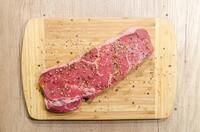


Vegetarian should take iron rich vegetable
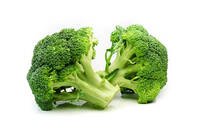

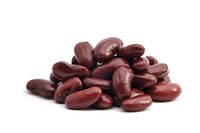
Fruit rich in vitamin C and help to absorb iron
